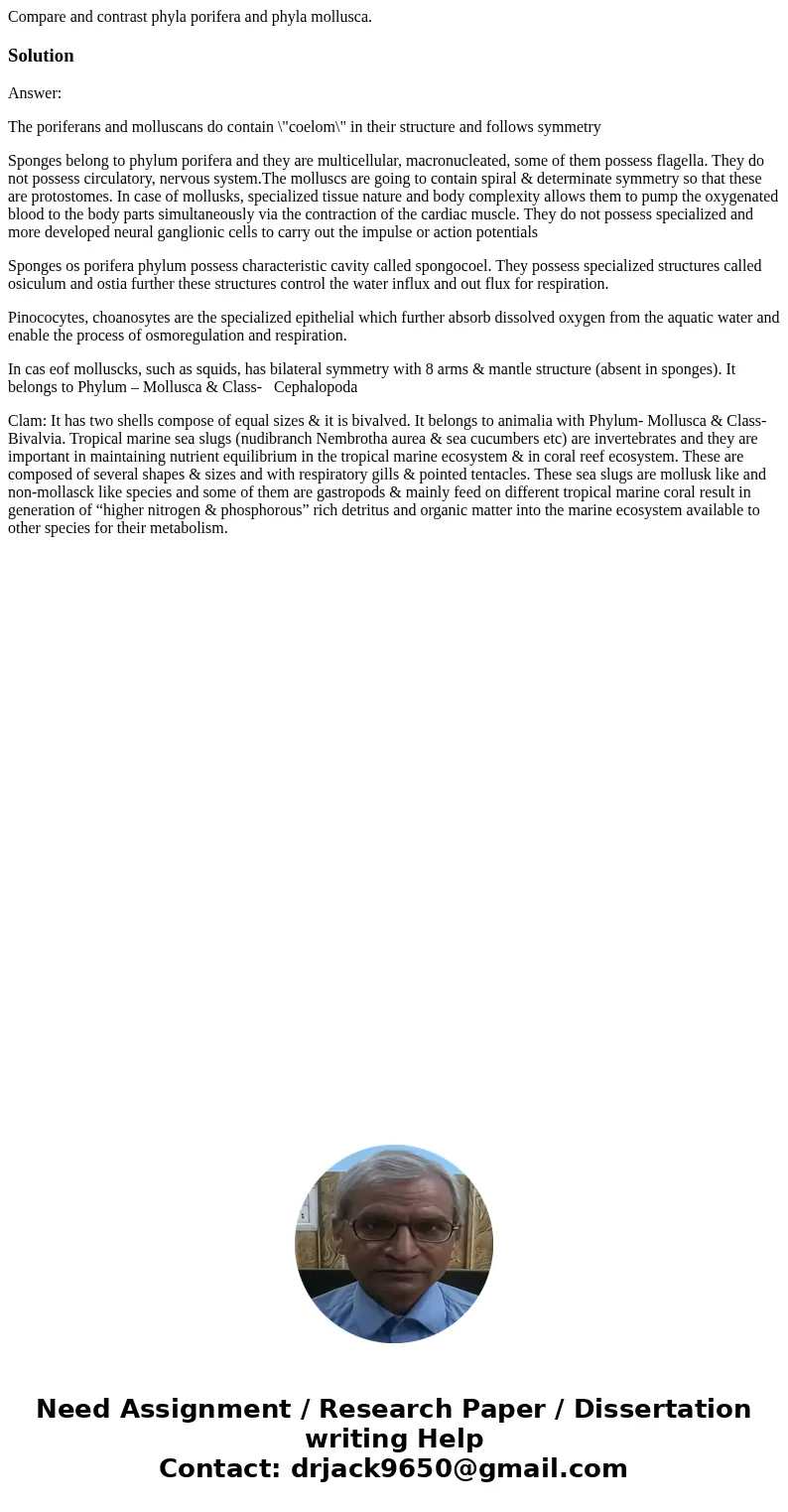Compare and contrast phyla porifera and phyla molluscaSoluti
Compare and contrast phyla porifera and phyla mollusca.
Solution
Answer:
The poriferans and molluscans do contain \"coelom\" in their structure and follows symmetry
Sponges belong to phylum porifera and they are multicellular, macronucleated, some of them possess flagella. They do not possess circulatory, nervous system.The molluscs are going to contain spiral & determinate symmetry so that these are protostomes. In case of mollusks, specialized tissue nature and body complexity allows them to pump the oxygenated blood to the body parts simultaneously via the contraction of the cardiac muscle. They do not possess specialized and more developed neural ganglionic cells to carry out the impulse or action potentials
Sponges os porifera phylum possess characteristic cavity called spongocoel. They possess specialized structures called osiculum and ostia further these structures control the water influx and out flux for respiration.
Pinococytes, choanosytes are the specialized epithelial which further absorb dissolved oxygen from the aquatic water and enable the process of osmoregulation and respiration.
In cas eof molluscks, such as squids, has bilateral symmetry with 8 arms & mantle structure (absent in sponges). It belongs to Phylum – Mollusca & Class- Cephalopoda
Clam: It has two shells compose of equal sizes & it is bivalved. It belongs to animalia with Phylum- Mollusca & Class- Bivalvia. Tropical marine sea slugs (nudibranch Nembrotha aurea & sea cucumbers etc) are invertebrates and they are important in maintaining nutrient equilibrium in the tropical marine ecosystem & in coral reef ecosystem. These are composed of several shapes & sizes and with respiratory gills & pointed tentacles. These sea slugs are mollusk like and non-mollasck like species and some of them are gastropods & mainly feed on different tropical marine coral result in generation of “higher nitrogen & phosphorous” rich detritus and organic matter into the marine ecosystem available to other species for their metabolism.

 Homework Sourse
Homework Sourse